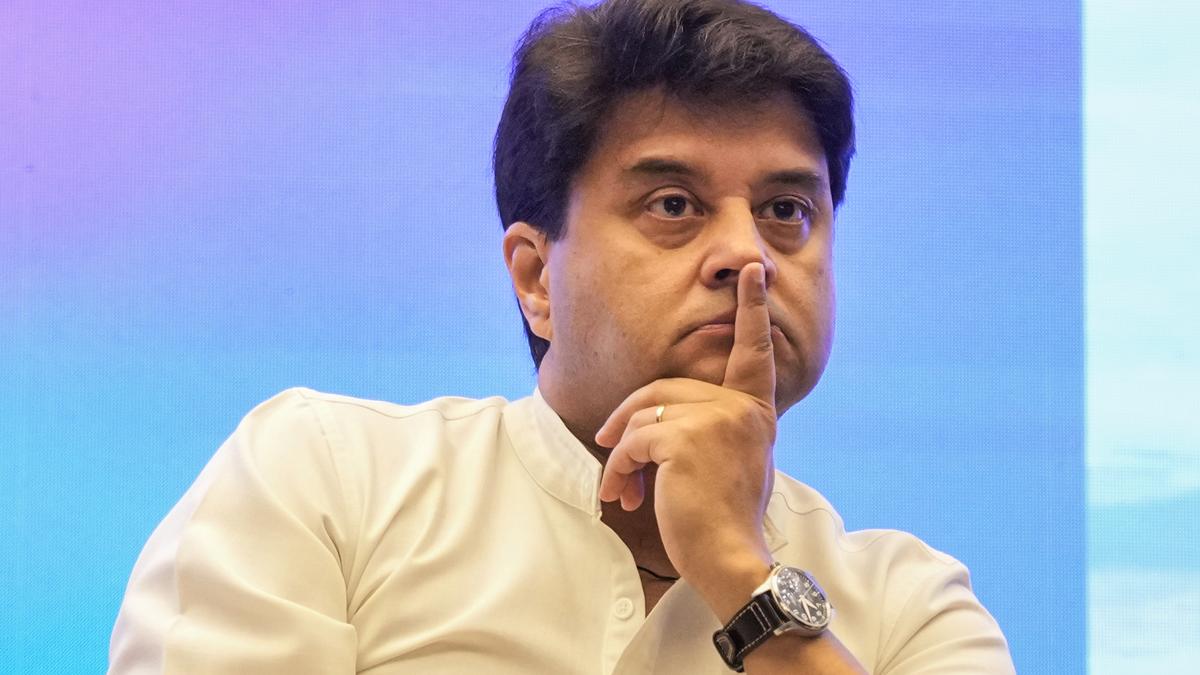Now Reading: India will have 1 billion Internet users by this fiscal: Jyotiraditya Scindia
-
01
India will have 1 billion Internet users by this fiscal: Jyotiraditya Scindia
India will have 1 billion Internet users by this fiscal: Jyotiraditya Scindia

With increasing data usage, the Internet market has grown from around 250 million to 974 million subscribers, says Minister of Communications and Development of North Eastern Region (DONER) Jyotiraditya Scindia. Stressing on the role of innovation and investment, Mr. Scindia discusses the potential of India’s telecom industry and the way ahead for improving connectivity. Edited excerpts:
This year’s theme for The India Mobile Congress (IMC) is “Innovate to Transform”. What’s the message here for the domestic telecom industry?
India has already proven itself to be the second largest telecom market in the world. In the last eleven years of Prime Minister Modi’s government, not only have we grown on the mobile market from roughly 1 billion to 1.2 billion customers; we have also hugely grown data usage and the Internet market from around 250 million to 974 million Internet subscribers. The broadband market, with speeds greater than 2 Megabits per second (Mbps), has grown from 66 million in 2014 to 940 million today. We should be able to hit one billion Internet users within the first half of next year, or even within this fiscal year.
That’s a huge exponential expansion and penetration of the market that we’ve seen. At the same time, India has also proven to the world the law of economies of scale, where call price has gone down from 50 paise a minute to 0.003 paise per minute; where data has gone from ₹287 a GB to ₹9 a GB. We are today the cheapest data market in the world; the global average is $2.49. We are roughly at 11 cents. We have 5% of the world average cost.
With such a large market and such a large ground to traverse, it is equally important for India to start pioneering the product space, and therefore IMC’s theme this year of “Innovate to Transform” very much ties in with its theme last year, “The Future is Now”. India has already trailblazed that path by innovation, with the Centre for Development of Telematics, Tejas Networks, Tata Consultancy Services (TCS), and the Telecommunications Standards Development Society, India (TSDSI) building its 4G stack across the board. Many products are also now being made in India.
We have gone from importing 80% of our mobile phone requirements to becoming a huge exporter of about ₹1.75 lakh crore worth of mobile phones. Even in terms of routers and other products, you have got world majors coming to India. So, India is now preparing to position itself in the product market.
The Bharat 6G Alliance that we have put together is working on contributing a minimum 10% of patents to the world of 6G. And it is our hope that in this year’s IMC, we will have over 1,50,000 visitors from 150 countries, over 7,000 delegates, and 400 exhibitors… I think it is time for India to push its investment in research and development (R&D), push its proficiency and capability on the product side, and that is why this year’s theme is about India not only being consumers of global tech but actually becoming the creators and innovators of global products in the telecom space.
With telecom equipment, we had home-grown technologies like Open RAN and 5Gi, but much of the final deployment in this generation has had less domestic contribution.
Which is why, in the Production-Linked Incentive (PLI) Scheme — which has been tremendously successful, with over ₹4,000 crore of investment and ₹80,000 crore in revenue, close to ₹16,000 crore of exports, and 25,000 jobs created; it has been a runaway success — we introduced last year, a 1% design-led incentive. Therefore, I want to design, produce, and export in India.
We hear a lot about Starlink and satellite communications. But in terms of connecting rural areas and remote areas, we have had decades of effort from the Universal Service Obligation Fund, now known as the Digital Bharat Nidhi. What is the long-term plan for terrestrial connectivity in remote areas?
As far as BharatNet is concerned, in the first phase, we laid almost 7 lakh kilometres of fibre optic cables. We connected almost 2.14 lakh gram panchayats. We are now working on BharatNet II. Mind you, this is the largest public sector investment in connectivity to the grassroots level in the world, of $16.9 billion (₹1.39 lakh crore).
What we are doing in BharatNet II is connecting the balance 2.64 lakh gram panchayats. We are going to have a capability of connecting 3.8 lakh villages on demand. The total number of villages in India is about 6.5 lakh, of which 2.64 lakh are gram panchayats.
Along with that, we have put together many new systems in BharatNet II which were not prevalent in BharatNet I.
So, let me talk about a few of those: first, we are now using Multiprotocol Label Switching (MPLS) routers instead of Gigabit Passive Optical Network (GPON) routers — it is a better technology, with higher redundancy levels; second, we are converting all the linear topography of BharatNet I — where a single breakage would impact all the downstream gram panchayats — into a ring topology, where each node is connected at two ends and is less prone to failure; third, the project implementation agencies have been mandated to also maintain the network for ten years after building it; and fourth, we are putting together a central network operating centre, to monitor and maintain the network throughout the country. Fifth, we are also going to put in place independent engineers — having nothing to do with BSNL or the L1 contractor — to ensure you are doing the job you are supposed to be doing, so there is a check and balance, and we are going to connect 1.5 crore Fibre-to-the-Home (FTTH) customers through this; and sixth, we are going to provide an Internet leased line which will have a minimum speed of 25 Mbps to every subscriber.
So, it is a much more robust system that we are trying to put in place.
Vodafone Idea Ltd. (VIL) has been suffering financially for multiple quarters. They have also had a setback at the Supreme Court, which refused to revise the calculation for their Adjusted Gross Revenue (AGR) dues. To what extent is the government willing to step in and make sure that there are at least three private operators in the telecom market?
We have three private operators and one state-owned operator. So, we have four altogether, and I think that is a very healthy environment… Having said that, I think each company has to manage its own profit-and-loss (P&L) account and balance sheet. We have done an equity conversion of almost ₹37,000 crore with VIL. The government now holds 49%. We do not intend to increase that stake above 49% at any point in the future.
On the Department of Posts: what impact has the Post Office Act, 2023 had on modernising India Post?
The Indian postal department is one of the most robust, largest distribution and logistics networks of any organisation — and I am weighing my words — in the world. And in the modern day, to be able to optimise its service delivery to a logistics organisation, the amendment to the Post Office Act empowers us to provide that flexibility to our Department, to be able to serve new markets, niche or otherwise, to validate proofs of concept, to be able to change our delivery portfolio…
And I think a lot of the new changes that we are being able to put in place are about making it a comprehensive service provider; not only mail, but postal life insurance, post office savings bank, and the India Post Payments Bank — which by the way has turned the corner and is making profits, three years before it was forecast to do so. We are thinking of coming up with a digital access code for every single latitude and longitude in the country.
Today, the postal department is empowered to be able to deliver all those capabilities by the amendments to the Act.
On the DIGIPIN initiative, which you just referenced, why was the need for this felt?
It is not the need — with changing times and technology, you have to keep evolving. It would be like asking, why did you come up with UPI, or — when I was Civil Aviation Minister — why did you come up with Digi Yatra. Any organisation only survives and furthers itself if it continues to evolve. And in that evolution, the digital access code will benefit the customer and the service provider.
It is a product which will be used far and wide by every service provider to be able to authenticate the latitude and longitude of where delivery takes place; this will aid them in ensuring crisper, more on-time, direct, focused delivery. The customer will benefit. It is a vehicle to provide much more efficiency. And it is our job to come up with that.
Remarks have been edited for conciseness and clarity.























